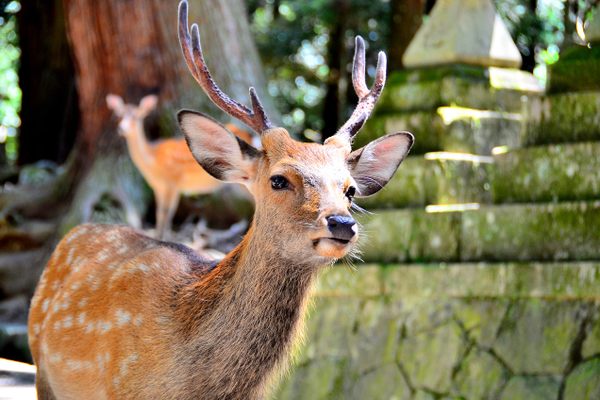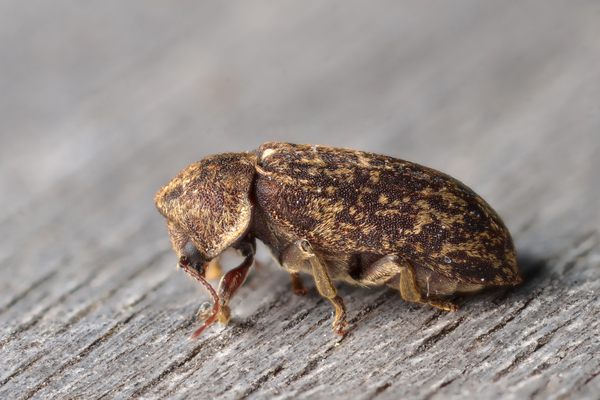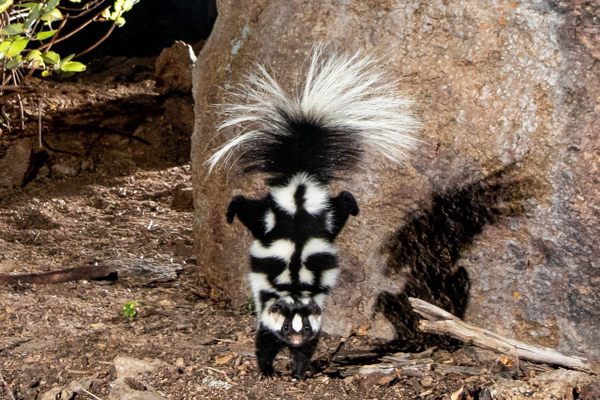The Smallest Wild Cat in the Americas Is Also the Cutest Bad Omen
In rural Chile, the kodkod, or güiña, has a bad rep for stealing chickens—and as a portent of death and disaster.
The animal world is full of harbingers of doom—at least, according to superstitions. From the Tower of London’s ravens (whose departure would signal the fall of an entire nation) to the average black cat crossing your unlucky path, plenty of critters warn of woe. In Ominous Animals, we explore the lore—and the science—behind these finned, furry, and feathered messengers of impending calamity.
A tiny spotted feline, often smaller than the average house cat, with a bushy tail and big eyes, moves through temperate forest and farmland in southern Chile. Despite its adorable appearance, a mere glimpse of the animal—the kodkod—may cause a farmer to fear for their livelihood, or even their life. According to some Indigenous Mapuche stories in Chile, seeing the pocket-sized predator could spell famine, disease, or death.
The kodkod is also known as güiña in Chile, or wiñefe in Mapudungun, the Mapuche language. Scientifically, it’s Leopardus guigna, and, at around five pounds, is the smallest species of wild cat in the Americas. It also occupies the smallest range, covering central and southern Chile to the edge of western Argentina. The kodkod is listed as vulnerable on the IUCN Red List, threatened by habitat loss, disease spread by domestic cats and dogs, and human hunters. But to some people, the little cat is itself a threat: The kodkod is notorious for raiding chicken coops.
According to a 2013 paper in the Journal of Ethnobiology and Ethnomedicine, superstitions about the kodkod are common in rural areas. Interviews with local students and Mapuche community members in southern Chile revealed that some people believed the cat had supernatural abilities, such as being impervious to bullets, or ripping off the heads of chickens to drink their blood—an exaggeration likely rooted in the tiny feline’s preference for eating only the neck and head of its poultry prey.

“My neighbor said: When the kodkod enters the henhouse to eat the farm birds, this is very bad luck for the family as either poverty, famine, or any kind of disease will appear that can lead to death to the owner. These are ancient beliefs,” said one participant. Some people believe that even a mere glimpse of the cat can mean bad luck, says conservation biologist Nicolás Gálvez at Pontificia Universidad Católica, Chile, a coauthor of the 2013 paper.
Some of the Mapuche participants told interviewers that the superstition is ancient, but its origins are hard to trace, says Gálvez. “There are not many traditional tales regarding the güiña, it’s more like local anecdotes,” he says, adding that superstitious beliefs about the kodkod are more common in communities directly impacted, specifically people raising poultry.
The kodkod’s ominous reputation also may be linked to its elusive nature. Other nocturnal predators that are rarely seen, including pumas and owls, are sometimes associated with bad luck in many cultures, including the Mapuche.
In Chile, the bad rap of the kodkod has reached well beyond its territory, entering into urban areas and even the national lexicon, says Gálvez. The word güiña is derived from the Mapudungun verb wiñamn, meaning to carry something—usually something stolen. Throughout Chile, güiña is often used to describe shady members of society, from thieves to corrupt politicians, even by people unaware of the kodkod.

More people know about the species today thanks to the rise of social media and, no doubt, the cat’s Instagram-ready adorableness, both of which have been used by various conservation organizations to raise awareness about the animal. “It has this cuteness factor, which is very important,” says Gálvez, who is part of the conservation-focused Guiña Working Group. “Most people in urban areas now know that the güiña is a small wild cat.”
Yet stigmas about the kodkod persist in rural communities, where conservation efforts are most needed. Here, Gálvez focuses on educational campaigns to appeal to the next generation. “Children can have a strong impact on how adults might change in their perception or their behavior,” he says. “At the end of the day, it’s hard to know what way people might behave, but the messenger is important.”
How communities value and perceive animals directly impacts species conservation, for better or worse, says University of Leeds conservation biologist George Holmes. That includes cultural traditions that imbue an animal with “magical” abilities. “If a species is deemed ‘harmful’ or ‘bad’ because of their ‘magic,’” Holmes says, the animal may be targeted for that reason alone, complicating conservation efforts. There have been instances of humans killing kodkod—an illegal act in Chile—for threats to poultry, but Gálvez says it’s unclear whether superstition was a motivating factor.

The cat’s elusive nature appears to offer it some protection from would-be hunters regardless of motive. Most community members Gálvez and his team have interviewed have never seen the animal other than in photos—but that doesn’t mean the kodkod aren’t around. Using camera traps for a recent project, “[We saw] the güiñas were there all the time,” he says. “They just go unnoticed by humans. That was good news.” Details of that project, published in 2018 in the Journal of Applied Ecology, found that the cat is also more resilient to habitat loss than expected.
“For me, this is a source of optimism,” Gálvez says. The kodkod offers another silver lining: The tiny cats hunt the rodents that carry hantaviruses, which can cause potentially fatal infections in humans. If conservation campaigns are successful, the cat may one day be known as the cutest pest controller, rather than an omen of catastrophe.
“If the mice invade us it is because we lack a kodkod cat nearby,” noted one participant interviewed by Gálvez and his team. “You should seek a balance, because if we are sharing this earth with animals, then they stand for something.”






























Follow us on Twitter to get the latest on the world's hidden wonders.
Like us on Facebook to get the latest on the world's hidden wonders.
Follow us on Twitter Like us on Facebook